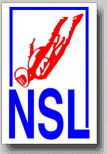
National
Skydiving
League
226 Pecan Street
Deland FL 32724
tel: (386) 801-0804
© 2003 - 2025
All Rights Reserved


226 Pecan Street
Deland FL 32724
tel: (386) 801-0804
© 2003 - 2025
All Rights Reserved

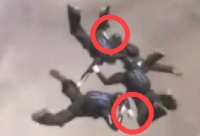
It was probably not easy for the judges in the NSL-TV audience to look for the four penalty situations in Perris Fury's Round 1 of the meet. The first infringement came at the end of Block 10 (Diamond - Bunyip) on the first page. The level problems caused trouble and resulted in an unsynchronized break, and the judges could not accept the Bunyip as a complete formation.
The other three penalties all occur at the end of the jump. The judges in Eloy apparently did not accept the inter between the Bunyip at the end of Block 10 on the third page and the Random Formation D (Yuan). Judy Celaya explains later why an inter like this one should not be acceptable.

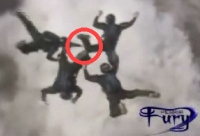
The trouble was not over yet for Perris Fury. The judges detected another very short window during the transition from the end of Block 11 (Photon - Photon) to the last formation that Fury completed within working time, the Unipod (A) on the top of the 4th page. The 19th point did not count as a scoring formation, and the official score was down from 19 points in working time to 15 points on the scoreboard.
There was not that much work for the judges in Eloy and for the NSL audience in Round 2 of the meet. The penalty situation is at the completion of Block 14 (Bipole - Bipole) on the top of the third page.
Perris Fury cannot be blamed for lack of synchronization this time. The team members move on "in synch" when the closing of the Bipole is not as clean as it was probably expected. However, the judges did not accept Fury's second Bipole as a complete formation, and the score was reduced from 19 to 18 points.

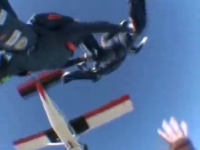
Round 6 was the most painful one for Evolution's team videographer Daniel Paquette. He had problems with the exit from the Pilatus Porter once again. This time, he even decided to film the whole jump from below after missing the Cataccord out of the right-hand door.
Perris Fury's Center Inside, Chris Farina, had already mentioned earlier how hard it was to watch the teams work hard on the Pilatus Porter exits: "My biggest observation was watching the teams having to train for the world meet out of the Porter and how challenging some of the exits ended up being. Having never jumped one, it was an eye opener to what kind of obstacle they were up against." Round 6 was probably the worst example for the Canadian team.
Perris Fury's Round 5 was the first one without any penalties. Airspeed Odyssey scored an 18-pointer for the slow sequence (22-18-J). Fury's 17-pointer was another round where the Perris team managed to stay very close to the winner.
Chief Judge in Eloy, FAI meet veteran Judy Celaya, took some extra time after reviewing the uploaded meet videos and the NSL News stories and provided her own feedback.
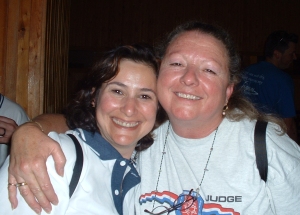
I love reading your comments and those of competitors regarding judging after a meet is over. I actually do learn from them, but they also frustrate me. It seems so adversarial between the teams and the judges. That is a wrong mindset.
Judges love to see beautifully executed skydives. We love to see innovations in engineering. We especially love seeing teams improve from meet to meet and year to year. We don't like teams deliberately trying to fake out the judges. We like good sportsmanship. We like seeing experienced teams mentoring the novices. We love it when it is apparent the competitors actually read the rules.
I'd like to make a few comments on the Perris Fury engineering issue. Indulge me while I quote a few rules. These are straight from the IPC Competition Rules effective March 1, 2008.

3.3.2. It is the responsibility of the team to clearly present the start of working time, correct scoring formations, inters and total separations to the judges.
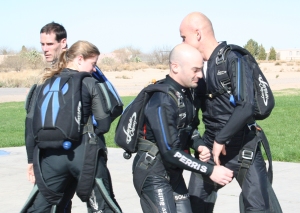
Perris Fury punished themselves in not flying synchronized. They looked rough. After the competition they asked me what I thought, and I told them they need to smooth out their flying. As I said before, a team that flies clean and smooth is a team that scores. Airspeed is the perfect example. In ten rounds, Airspeed had only one bust and four judgment calls (judgment calls are when a penalty is not called by the majority of the judges). Airspeed was clean in seven rounds out of ten. On the other hand, Perris Fury scored nine busts and 12 judgment calls. They were clean only in Rounds 5 and 8. Perhaps they should study those rounds to see what they did right.
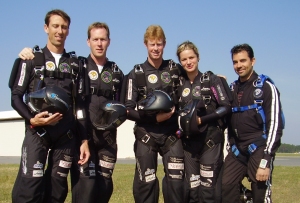
I don't think competitors really want to learn from the judges. I am constantly telling competitors and coaches they should take a Judges Certification Course. They spend so much money on training and coaching, but they just don't see the value of learning the judge's perspective. I can't say it too often. If you aren't jumping and dressing for the judges, what you are doing is pointless.
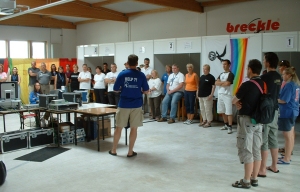
Another option is to keep a judge on retainer for periodic debriefing. This would be so easy to do in this electronic age. Send your dives to judges for feedback. Bring a judge to the DZ for a weekend to go over team dives and techniques to see if they work before it is actually tried out in competition. The USPA and IPC websites have judge lists with email addresses available. You would also be helping judges stay current. We get tired of watching the same dives over and over. Send us new stuff. All the time I have for now. Keep up the good work.